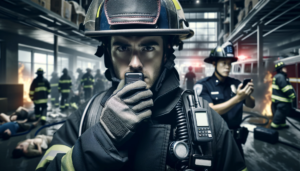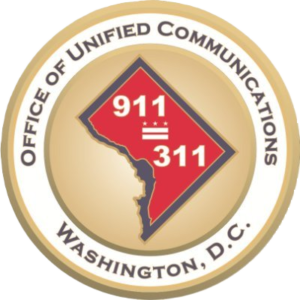- Site Survey
design
EMERGENCY RESPONDER RADIO COVERAGE SYSTEM (ERRCS)
In-building public safety DAS coverage solutions
Telnet will
Test, Design, Install, Certify and Monitor
your In-Building Emergency Responder Radio Coverage System,
also known as In-Building Public Safety Solution.
LET’S MAKE YOUR ENVIRONMENT SAFER
In-Building Emergency Responder Radio Coverage Systems also called In-Building Public Safety Communication Systems are needed because radio signals have limited propagation through various materials.
Today’s first responders not only rely on dependable voice communication, but increasingly also on data, telemetry, and location information. In emergencies where a matter of seconds can mean the difference between life and death, every tool at the first responder’s disposal must be absolutely reliable.

OUR SOLUTIONS
We will keep you in compliance with all the new fire codes to help you with your occupancy permits. In addition to safety, having reliable coverage is a solid investment, which could improve property class ratings and reduce insurance costs. If you have an existing facility, we can assess your current coverage and provide you with an improvement plan. For buildings that are in the planning phase, Telnet can provide a pre-construction plan to ensure first responder communications into the building architecture and regulatory compliance for your occupancy permit.
Additional Services:
- Design-Build
- Public Safety BDA / DAS Design
- Shop Drawing / Permitting
- Public Safety Grid Testing
- AHJ / OUC Coordination
- Third-Party Testing / Inspection
- DAS System Audit
- Construction & Installation
- Public Safety BDA / DAS Maintenance and Repair
- Smarts and Parts
- Site Survey
CODE COMPLIANCE and SAFER BUILDING COALITION
Fire codes for buildings are extensive and vary based on location, as they are determined by local, state, and federal regulations. Morever, there are also international codes that may be adopted by various jurisdictions. Here’s a general overview of the types of fire codes that buildings might need to comply with:
-
International Fire Code (IFC): Developed by the International Code Council (ICC), it provides regulations to safeguard life and property from fires and explosion hazards. It is updated every three years.
510.1 Emergency responder radio coverage in new buildings: All new buildings shall have approved radio coverage for emergency responders within the building based upon the existing coverage levels of the public safety communication systems of the jurisdiction at the exterior of the building. This section shall not require the improvement of the existing public safety communication systems.
510.4.2.1 Amplification systems allowed: Buildings and structures that cannot support the required level of radio coverage shall be equipped with a radiating cable system, a distributed antenna system with Federal Communications Commission (FCC)-certified signal boosters, or other system approved by the fire code official in order to achieve the required adequate radio coverage.
-
National Fire Protection Association (NFPA) Codes: The NFPA publishes numerous codes and standards aimed at minimizing the risk and effects of fire. Key codes include:
- NFPA 1: Fire Code
- NFPA 101: Life Safety Code
- NFPA 70: National Electrical Code
- NFPA 72: National Fire Alarm and Signaling Code
- NFPA 1225: Standard for Emergency Services Communications
- 18.8.1 Radio coverage shall be provided throughout the building as a percentage of floor area as specified in 18.8.3 and 18.8.4.
- 18.8.3 Critical areas, including fire command centers, fire pump rooms, exit stairs, exit passageways, elevators, elevator lobbies, standpipe cabinets, sprinkler sectional valve locations, and other areas deemed critical by the AHJ, shall be provided with 99 percent floor area radio coverage.
- 18.8.5 Buildings and structures that cannot support the required level of radio coverage shall be equipped with a system that includes RF-emitting devices that are certified by the radio licensing authority to achieve the required adequate radio coverage
-
Local Building Codes: Cities and states may have additional building codes that incorporate fire safety standards.
-
Fire Department Regulations: Local fire departments often have regulations regarding building inspection and maintenance of fire protection systems.
-
Occupational Safety and Health Administration (OSHA) Standards: For workplaces, OSHA has requirements that may affect fire safety, such as means of egress and fire protection.
-
Americans with Disabilities Act (ADA) Regulations: These can include requirements for fire alarms to have visual signals for the hearing impaired.
-
State-Specific Codes: Each region have adopted local amendments to the national and international fire codes.
-
Industry-Specific Codes: Certain industries, like healthcare or hospitality, have additional fire code requirements.
For detailed information and access to these resources, your readers can visit:
- NFPA’s free access codes and standards page: NFPA Free Access (NFPA).
- The ICC Digital Codes website where the International Fire Code (IFC) can be reviewed: ICC Digital Codes for IFC (ICCSafe).
- For additional resources and to learn about fire, electrical, and related hazards, the main NFPA website is a valuable resource: NFPA (NFPA).
FAQ
What is ERRCS?
ERRCS stands for Emergency Responder Radio Communication Systems. These systems are crucial for maintaining reliable communication among first responders during emergencies. They play a vital role in any emergency response plan. Consequently, ERRCS ensures that emergency responders can communicate effectively within buildings, even in areas where radio signals may be weak or non-existent.
Why is ERRCS Necessary?
In critical situations, clear and reliable communication between response teams can be a matter of life and death. Therefore, ERRCS ensures that first responders can communicate without interruption or signal loss during emergencies. The communication failures experienced by emergency responders during the September 11th attacks in New York City highlighted the need for high-functioning ERRCS systems. Also, it is required by IFC Code 510.1
How Does ERRCS Work?
ERRCS consists of several key components:
- Bi-Directional Amplifiers (BDAs): These amplify signals from public safety radios and distribute them throughout a building or facility. BDAs ensure clear communication, even in weak signal areas.
- Distributed Antenna Systems (DAS): DAS distributes amplified signals from BDAs throughout the building. It strategically places antennas and cabling to provide complete coverage, allowing effective communication regardless of location within the building.
- Battery Backup Systems: These provide power to ERRCS components during power outages, ensuring continuous communication for first responders.
- Monitoring Systems: Constantly monitoring signal strength, battery levels, and other metrics, these systems alert if any issues are detected.
- Radio Frequency (RF) Signal Source: The initial signal that is amplified and distributed throughout the building comes from an RF signal source, such as public safety radios or dedicated repeaters1.
What is DAS?
DAS stands for Distributed Antenna System. It is an extension of the public safety network, consisting of spatially separated antenna nodes connected to a common source via a transport medium. DAS provides wireless service within a geographic area or structure.
In the context of ERRCS, DAS helps distribute amplified signals from BDAs throughout a building, ensuring comprehensive coverage for first responders.
ADDITIONAL INFORMATION
What Else Are Emergency Responder Communication Systems Called?
As this field expands and its requirements become more widespread, people increasingly refer to it using various acronyms:
DAS – Distributed Antenna System (commonly used in the context of improving in-building wireless communications, including emergency communications)
Public Safety DAS – Specifically focuses on Distributed Antenna Systems for public safety communications
BDA – Bi-Directional Amplifier (used to boost radio signals inside buildings)
In-Building Wireless Solutions – A broader term that encompasses any system used to enhance wireless communication inside buildings
Firefighter Communication System – More focused on communication systems used by firefighters, often within the context of ERRCS
Public Safety Radio Coverage – General term that can include ERRCS as part of ensuring radio coverage for public safety personnel
Emergency Communication Systems – Broad term that could include ERRCS among other emergency communication technologies
RF Coverage Solutions – Refers to Radio Frequency coverage solutions, which can be part of ERRCS implementations
ERRS (Emergency Responder Radio Systems): This term suggests a more general system for radio communication used by emergency responders. It encompasses the equipment and technology that provide the communication capabilities needed by first responders to perform their duties effectively in emergency situations. This could include the radios themselves, along with the supporting infrastructure.
First Responder Communication Enhancement Systems – Another term that highlights the focus on first responders
ERCES (Emergency Responder Communication Enhancement Systems): This is closely related to ERRCS and seems to specifically emphasize the enhancement aspect of radio systems within buildings or other structures to ensure clear and reliable communication
The Enhancement Systems mentioned above typically include technologies like:
Distributed Antenna Systems (DAS): Ensures even and strong wireless coverage within large or complex structures.
Bi-Directional Amplifiers (BDAs): Boosts the signal strength of incoming and outgoing communications.
Signal Boosters and Repeaters: Extends the range of communications to cover dead spots.
What is the difference Between DAS and Repeater:
DAS:
- Distributes amplified signals throughout a building.
- Provides coverage in dead zones and isolated areas.
- Used for ERRCS to enhance communication.
Repeater:
- Receives and retransmits signals over a larger distance.
- Used to extend the range of radio communication.
- Typically used for outdoor coverage, not specifically for in-building communication.
